What is Non-Fungible Token (NFT)?
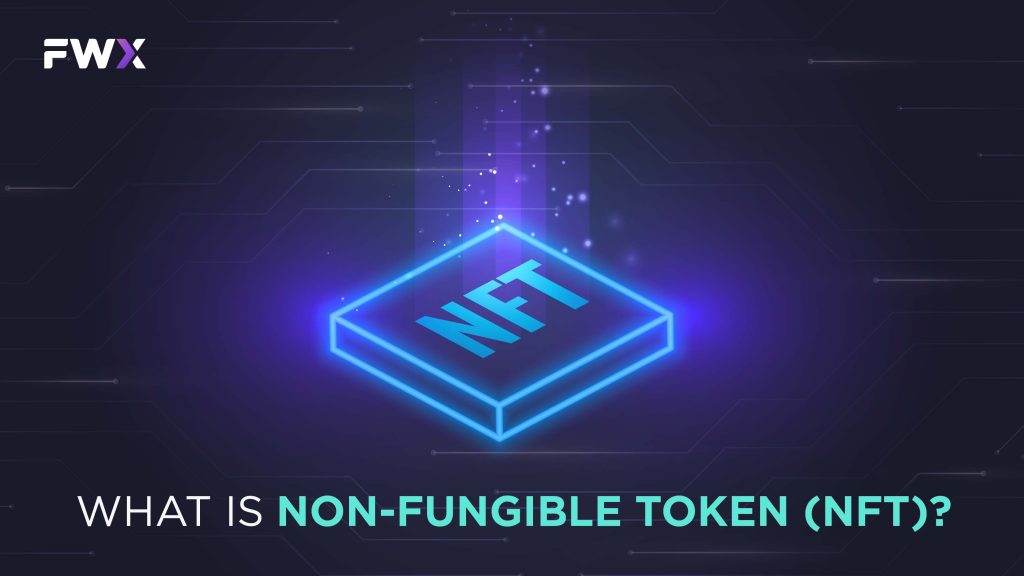
A non-fungible token (NFT) is a unique digital identifier that is recorded on a blockchain, and is used to certify ownership and authenticity of digital assets, such as digital art, music videos, and in-game items. Unlike fungible tokens, such as Bitcoin or Ethereum, which are interchangeable and have the same value, NFTs are one-of-a-kind and cannot be replaced.
NFTs are created by uploading a digital file to an NFT marketplace, where it is then tokenized and minted on a blockchain. The NFT is then assigned a unique identifier, which is stored on the blockchain. This identifier proves ownership of the NFT and cannot be forged.
NFTs can be bought and sold on NFT marketplaces, and their value is determined by supply and demand. Some NFTs have sold for millions of dollars, while others have sold for much less.
History of NFT
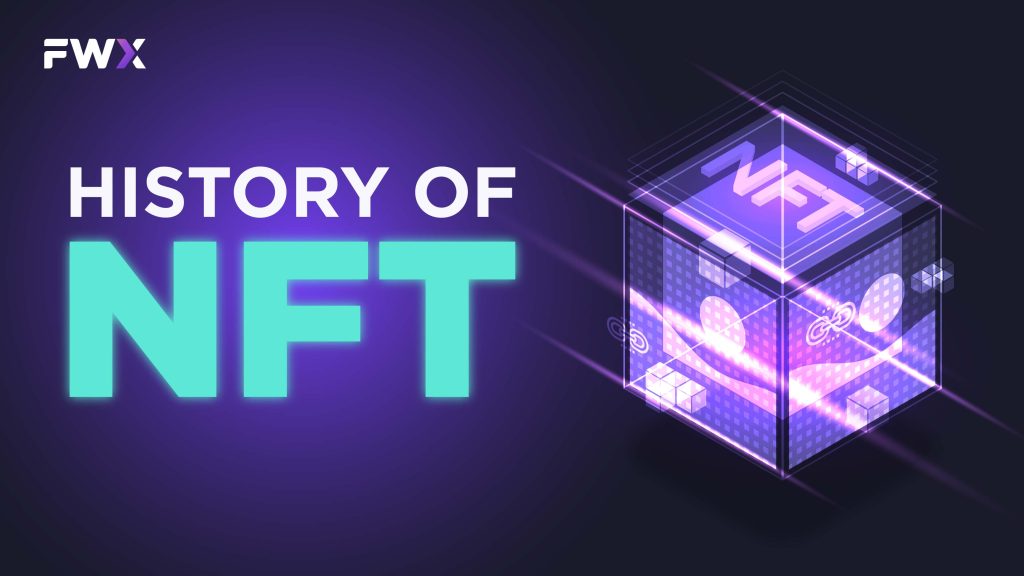
The history of NFTs can be traced back to the early days of blockchain technology, with the concept of colored coins emerging around 2012-2013. However, it wasn’t until 2017, with the advent of the Ethereum blockchain, that NFTs gained significant recognition and began to be widely adopted.
Early Exploration (2012-2015)
2012: Introduction of colored coins on the Bitcoin blockchain as a way to represent ownership of specific assets.
The Rise of Ethereum and ERC-721 (2015-2017)
2015: Development of the Ethereum blockchain, providing a more sophisticated platform for creating and interacting with NFTs.
2017: Introduction of the ERC-721 standard, specifically designed for non-fungible tokens, providing a clear framework for managing NFT properties.
CryptoKitties and the NFT Boom (2017-2018)
2017: Launch of CryptoKitties, a game that sparked the NFT craze, demonstrating their potential as collectibles and digital assets.
2018: Continued growth of the NFT ecosystem, with new projects and marketplaces emerging across various blockchain platforms.
Maturation and Expansion (2018-Present)
2021: NFTs reach a wider audience, with sales reaching billions of dollars and mainstream recognition in the art and tech worlds.
2022-Present: Ongoing expansion of NFT applications beyond collectibles, including digital art, music, gaming, and virtual real estate.
The history of NFTs is marked by innovation, exploration, and rapid growth. As the technology continues to develop, NFTs are poised to revolutionize various industries and reshape the way we interact with digital assets in the future.
Properties of NFT
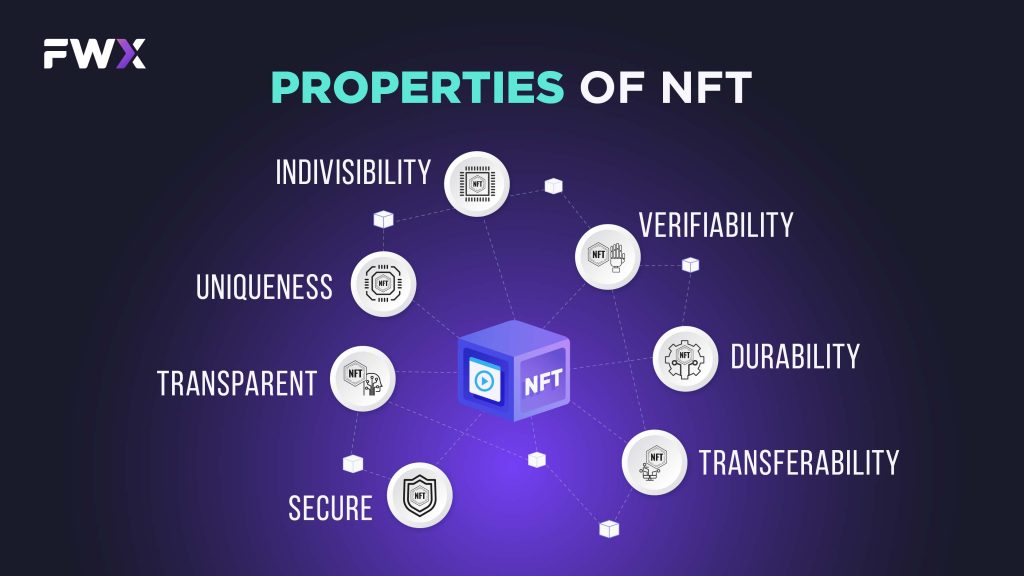
NFTs possess several key properties that distinguish them from other digital assets:
1. Uniqueness: Each NFT is unique and cannot be replicated. This is because each NFT has a unique identifier that is stored on the blockchain. This identifier is like a fingerprint, and it cannot be forged or copied.
2. Indivisibility: NFTs represent a single item and cannot be divided into smaller units. This is because NFTs are unique and indivisible. For example, you cannot own half of an NFT, or you cannot divide an NFT into smaller pieces.
3. Verifiability: NFT ownership is recorded on a blockchain, providing a verifiable proof of ownership. This means that you can always prove that you own an NFT, and that no one else can claim ownership.
4. Durability: NFTs are stored on a decentralized network, ensuring their long-term persistence. This means that NFTs will not be lost or destroyed, even if the computer that created them is lost or destroyed.
5. Transferability: NFTs can be easily transferred between owners. This is because NFTs are stored on a blockchain, and blockchain transactions are secure and transparent.
6. Secure: NFTs are stored on a blockchain, which is a secure and tamper-proof ledger. This makes NFTs less susceptible to fraud and theft.
7. Transparent: All NFT transactions are recorded on the blockchain, making them transparent and traceable. This can help to prevent fraud and ensure that NFTs are used in a fair and ethical way.
How does NFT work?
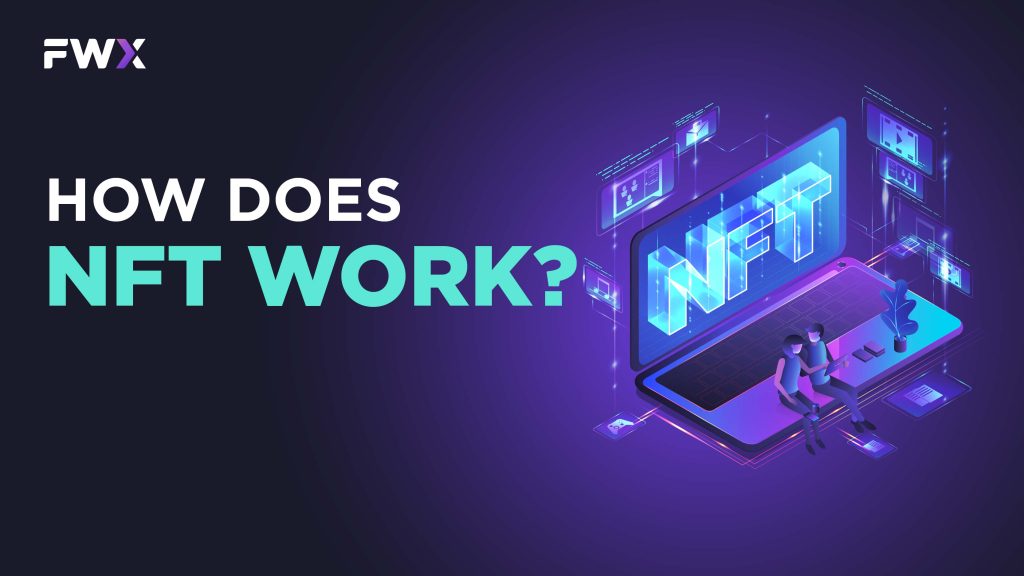
Here’s a step-by-step explanation of how NFTs work:
Creation: An NFT is created through a process called minting. Minting involves uploading the digital asset, such as an artwork, music file, or video, to a specific blockchain platform, along with metadata that describes the asset.
Tokenization: Once the asset is uploaded, it is tokenized and transformed into an NFT. The tokenization process involves linking the digital asset to a unique identifier on the blockchain. This identifier serves as the proof of ownership and authenticity of the NFT.
Ownership: The ownership of the NFT is recorded on the blockchain, creating an immutable record of who owns the asset. This makes it very difficult to counterfeit or forge NFTs, as their ownership history is transparent and verifiable.
Transferability: NFTs can be easily transferred between owners. This is done through transactions on the blockchain, similar to how cryptocurrency transactions are processed. The buyer acquires the NFT and its associated ownership rights, while the seller relinquishes them.
Programmability: NFTs can be programmed with additional features, such as royalties for the creator or access to exclusive perks. This programmability opens up a wide range of possibilities for NFT applications.
Types of NFTs
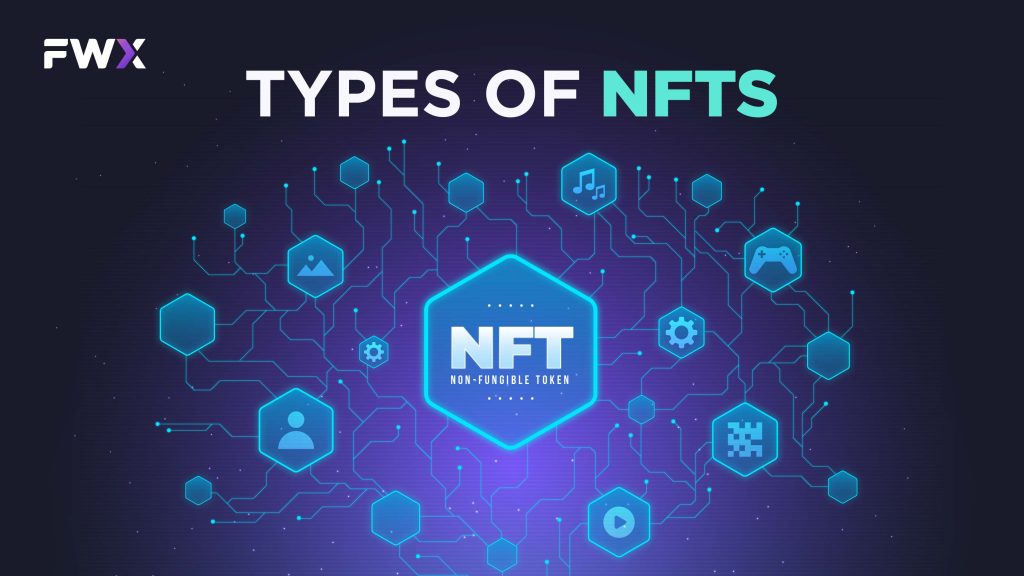
Non-fungible tokens (NFTs) have emerged as a revolutionary technology, offering new possibilities for digital ownership, authentication, and monetization. NFTs encompass a wide range of digital assets, each with its unique characteristics and applications.
Art NFTs: These are digital artworks that are represented as NFTs. This includes paintings, sculptures, photographs, and other forms of digital art. Art NFTs have become increasingly popular in recent years, with some selling for millions of dollars.
Collectible NFTs: These are digital items that are collected for their rarity or uniqueness. This includes trading cards, virtual avatars, and other digital collectibles. Collectible NFTs have been around since the early days of NFTs, and they continue to be a popular category.
Gaming NFTs: These are digital assets that are used in video games. This includes in-game items, characters, and virtual land. Gaming NFTs have become increasingly popular in recent years, as they allow gamers to own and trade digital assets that they have earned in-game.
Utility NFTs: These are NFTs that provide access to a particular service or benefit. This includes membership passes, tickets to events, and access to exclusive content. Utility NFTs are a newer category of NFTs, and they are still being explored by developers and businesses.
Music NFTs: These are digital music files that are represented as NFTs. This includes songs, albums, and even live recordings. Music NFTs are a way for musicians to monetize their work and connect with fans in a new way.
Domain NFTs: These are NFTs that represent ownership of a website domain. This is a new category of NFTs, and it is still being explored by developers and businesses.
Virtual Real Estate NFTs: These are NFTs that represent ownership of land in a metaverse platform. This is a new category of NFTs, and it is still being explored by developers and businesses.
As the NFT space continues to evolve, new types of NFTs with unique applications are likely to emerge. The possibilities for NFTs are vast, extending beyond the realms of collectibles and into areas such as education, healthcare, and supply chain management. NFTs have the potential to reshape the way we interact with and value digital assets, creating new opportunities for ownership, authentication, and monetization in the digital age.
NFT use cases
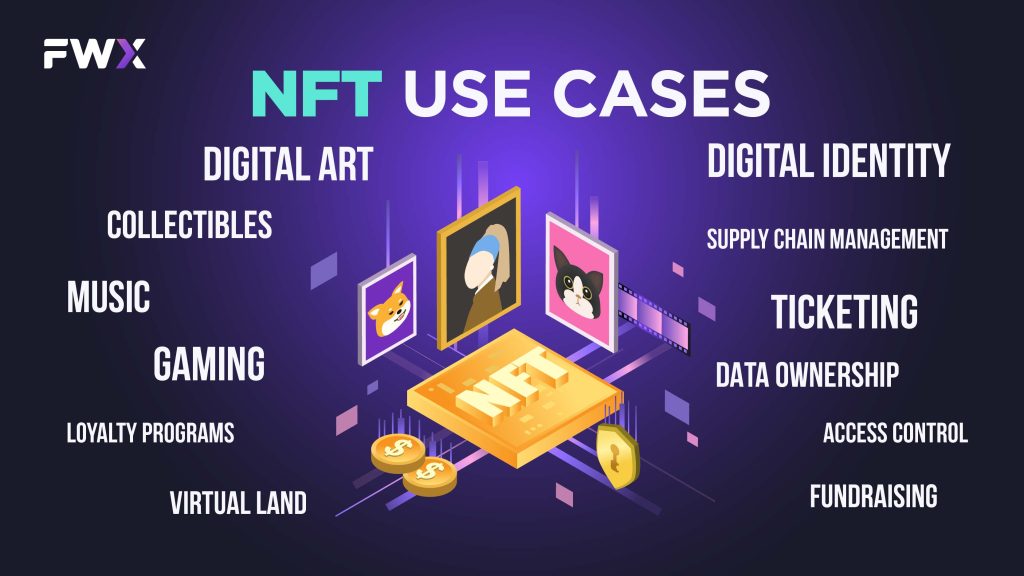
NFTs have a wide range of potential use cases, and they are increasingly being used in a variety of industries. Some of the most common use cases of NFTs include:
Digital art: NFTs are being used to create and sell unique digital artworks. This has given artists a new way to monetize their work and reach a wider audience.
Collectibles: NFTs are being used to create and sell digital collectibles, such as trading cards and virtual items. This has created a new market for collectibles that is both digital and global.
Gaming: NFTs are being used to create and sell in-game items, such as weapons, armor, and characters. This has given gamers a new way to own and trade digital assets.
Music: NFTs are being used to create and sell unique music recordings. This has given musicians a new way to monetize their work and connect with fans.
Virtual land: NFTs are being used to represent ownership of virtual land in metaverse platforms. This has created a new market for real estate that is entirely digital.
Digital identity: NFTs can be used to create digital identities that are secure and tamper-proof.
Supply chain management: NFTs can be used to track the movement of goods and materials throughout a supply chain.
Ticketing: NFTs can be used to create and sell tickets to events. This can help to reduce fraud and ensure that tickets are authentic.
Loyalty programs: NFTs can be used to create and manage loyalty programs.
Fundraising: NFTs can be used to raise money for charities and other causes.
Access control: NFTs can be used to grant access to gated content or services.
Data ownership: NFTs can be used to give individuals more control over their personal data.
These are just a few examples of the many potential use cases for NFTs. As the technology continues to develop, we can expect to see even more innovative and creative ways to use NFTs in the future.
What is an NFT Marketplace?
An NFT marketplace is an online platform where users can buy, sell, trade, and mint non-fungible tokens (NFTs). NFTs are unique digital assets that represent ownership of real-world or digital items, such as artwork, music, collectibles, and virtual assets. NFT marketplaces provide a secure and user-friendly environment for users to interact with NFTs, enabling them to discover, purchase, and manage their digital assets.
Examples of Popular NFT Marketplaces:
OpenSea: One of the largest and most established NFT marketplaces, offering a wide variety of digital art, collectibles, and gaming NFTs.
Rarible: A community-driven NFT marketplace with a focus on supporting emerging artists and creators.
SuperRare: An NFT marketplace known for its curated selection of high-quality digital art pieces.
Nifty Gateway: An NFT marketplace that collaborates with popular artists and brands to release exclusive digital collectibles.
Foundation: A creator centric NFT marketplace that emphasizes artist empowerment and community engagement.
The most expensive NFTs
The most expensive NFT sold to date is “The Merge” by Pak, which was purchased for $91.8 million in December 2021. The Merge is a dynamic artwork that changes every day, and it is owned by over 28,000 people.
Here are some other expensive NFTs that have been sold:
- “Everydays: The First 5000 Days” by Beeple: $69.3 million (March 2021)
- “Clock” by Julian Assange and Pak: $52.7 million (February 2022)
- “CryptoPunk #5822” by Larva Labs: $23.7 million (February 2022)
- “HUMAN ONE” by Beeple: $28.9 million (September 2021)
- “CryptoPunk #7523” by Larva Labs: $11.75 million (June 2022)
- “TPunk #3442” by Larva Labs: $10.5 million (July 2022)
- “CryptoPunk #4156” by Larva Labs: $10.26 million (August 2022)
- “CryptoPunk #5577” by Larva Labs: $7.7 million (May 2022)
It is important to note that the value of an NFT is subjective and can fluctuate based on market demand and other factors.
The future of NFTs
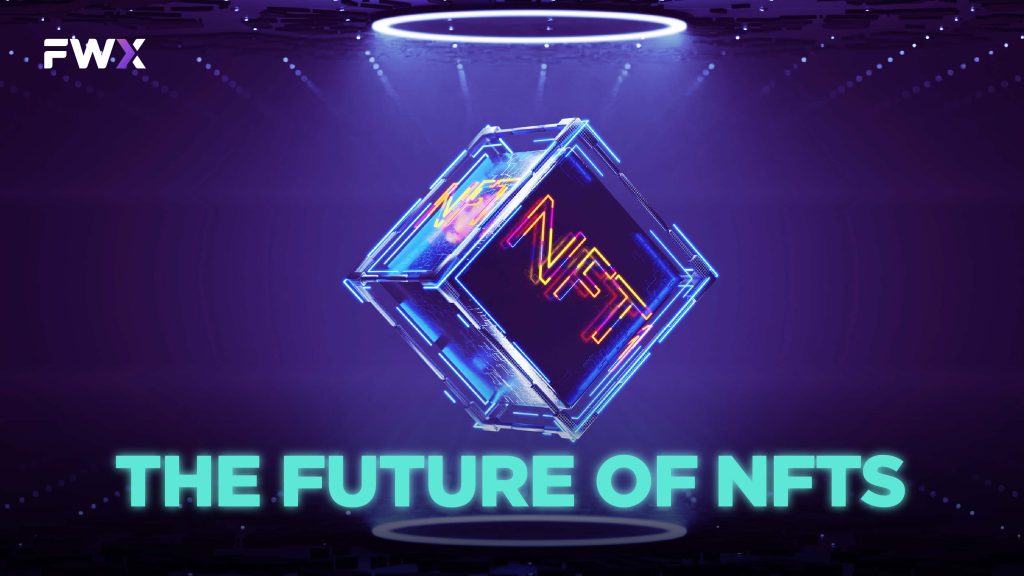
The future of NFTs is still uncertain, but there are a number of trends that suggest they have the potential to become a major force in the digital economy.
Widespread adoption of blockchain technology: Blockchain technology is the foundation of NFTs, and as it becomes more widely adopted, so too will NFTs. This is likely to happen as businesses and governments see the potential of blockchain to improve efficiency and transparency.
Increased interest from institutional investors: Institutional investors, such as hedge funds and pension funds, are increasingly interested in NFTs. This is due to the fact that NFTs represent a new and potentially lucrative asset class.
Development of new NFT applications: NFTs are being used for a wide variety of applications, and this is only going to continue as developers come up with new and innovative ways to use them. For example, NFTs are being used to create virtual worlds, track ownership of digital assets, and even provide access to exclusive goods and services.
Greater focus on utility and value: There is a growing trend towards NFTs that have real-world utility and value. This is in contrast to early NFTs, which were often seen as purely speculative assets.
Improved regulation and standardization: The NFT market is currently unregulated, but this is likely to change in the future as governments and regulators seek to protect investors and consumers. In addition, there is a need for more standardization in the NFT market to make it easier for businesses and individuals to create, buy, and sell NFTs.
Overall, the future of NFTs is bright. They have the potential to revolutionize the way we own and interact with digital assets. However, there are still a number of challenges that need to be addressed before NFTs can reach their full potential.


